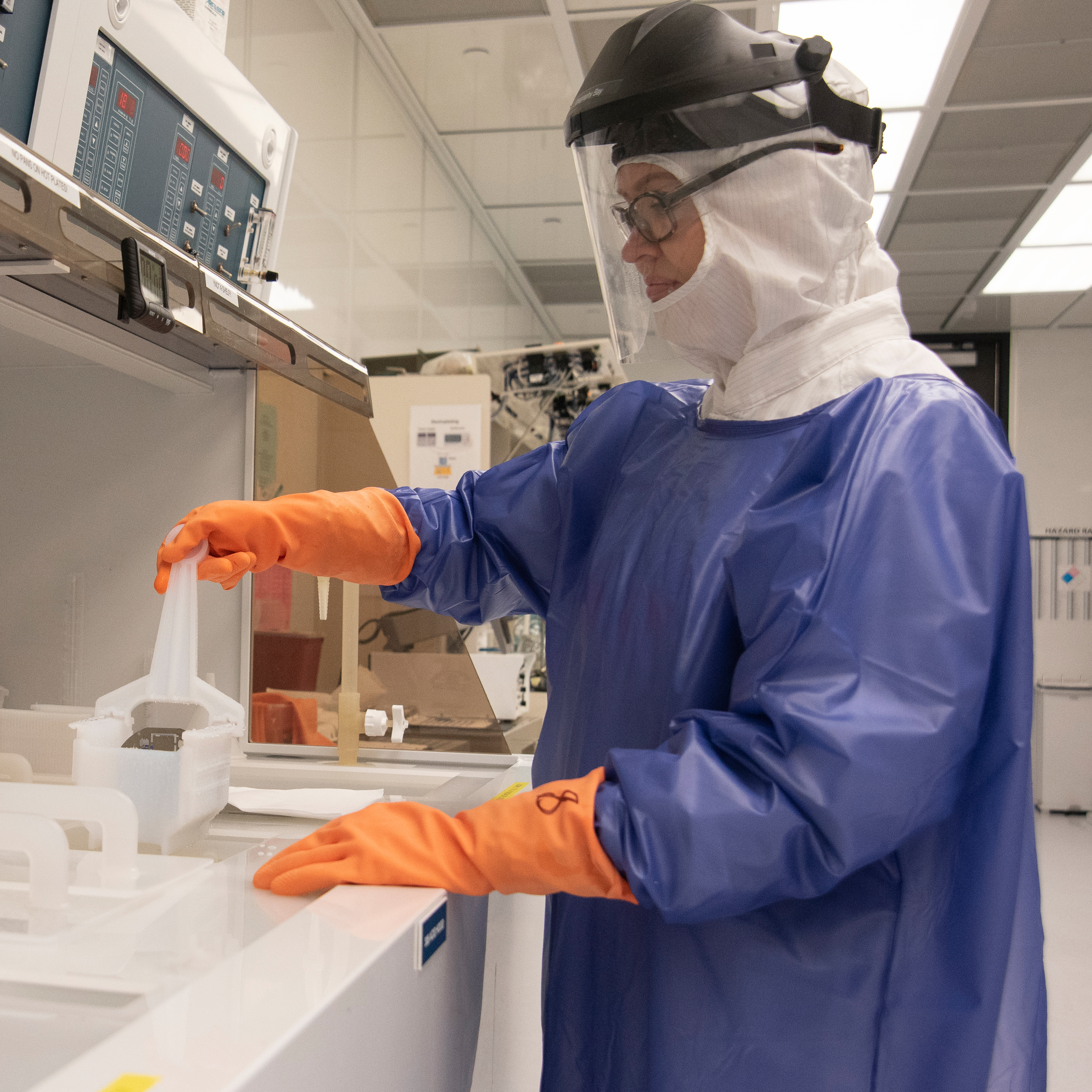The next step on our tour is etching. Now that we have deposited materials onto our wafer and placed a stencil or mask onto the wafer our next step is to etch away materials we don’t want to keep. Etching can be performed in 2 manners. The first is by submerging the wafer into a specific chemical that will attack the exposed material, but not attack our stencil.
This process can be done very effectively, but there are some drawbacks with wet chemical etching. The biggest reasons are that the chemicals can be too harsh and will attack our stencil. The chemical can also be very strong and will go underneath or undercut our stencil. When this occurs we use a second technique called plasma or dry etching instead. The wafer is placed in a vacuum chamber and air is pumped out of the chamber down to a specific vacuum level. Special etch gases are flowed into the vacuum chamber and an electromagnetic field is applied to create ions and a plasma. An ion is a charged particle that has lost some of its electrons for the number of protons and electrons are not the same. These ions attack the material we want to remove and the byproducts are carried away by the vacuum pump. The end result is our patterned material and stencil. After the stencil is removed the process may start all over again to create specific layers that make up our intended device.
These four steps of thermal processing, deposition, photolithography and etching make up the primary activities in our cleanroom.

